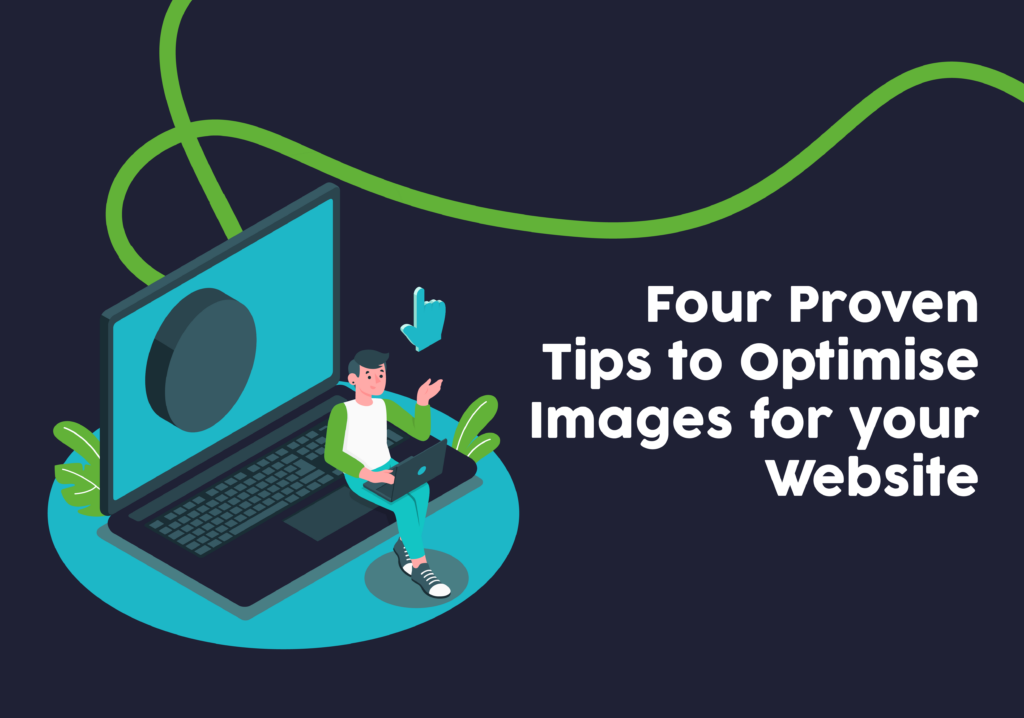Getting your images noticed on Shutterstock can feel like finding a needle in a haystack. With millions of images uploaded daily, standing out requires more than just great photography. That’s where understanding how Shutterstock ranks images comes into play. When you know what factors influence visibility, you can optimize your uploads to appear higher in search results. This not only boosts your chances of making sales but also helps establish your portfolio as a go-to source for buyers. So, let’s dive into what makes
Understanding Shutterstock’s Search Algorithm

To improve your image rankings, you first need to understand how Shutterstock’s search algorithm works behind the scenes. Think of it as a giant librarian that sorts through countless images to find the best matches for each search query. While Shutterstock doesn’t reveal every detail of its algorithm, many creators and data analysts have pieced together some key insights:
- Relevance: Shutterstock looks at your image metadata—titles, descriptions, and keywords—to determine how well they match a user’s search. Accurate and specific keywords are essential.
- Engagement Metrics: How users interact with your images matters. If your image gets many clicks, saves, or downloads shortly after being uploaded, the algorithm perceives it as high quality and relevant.
- Recency: Fresh uploads often get a temporary boost, especially if they match trending topics or seasonal themes.
- Image Quality: Shutterstock values high-resolution, well-composed images. Poor quality or low-resolution images tend to rank lower.
- Portfolio Performance: Consistent uploads, a high acceptance rate, and positive user interactions can help boost your overall profile visibility.
Basically, Shutterstock’s algorithm strives to serve users the most relevant, high-quality images quickly. By aligning your upload strategy with these factors—using precise keywords, maintaining high technical standards, and engaging with your audience—you can improve your images’ chances of ranking higher. Remember, SEO isn’t a one-time task but an ongoing process. Keep experimenting, analyze your results, and refine your approach to stay ahead in the game of image visibility.
Optimizing Image Titles and Descriptions for Better Visibility

When it comes to getting your images noticed on Shutterstock, one of the most important steps is optimizing your image titles and descriptions. Think of these as the storefront signs and product descriptions for your images—they help both the platform’s algorithm and potential buyers understand exactly what you’re offering.
Start with crafting clear, descriptive titles that accurately reflect the content of your image. Instead of vague titles like “Beautiful Scene,” go for specific ones like “Sunset Over Mountain Lake with Reflection.” This helps Shutterstock’s search engine match your image with the right queries.
Similarly, your description should expand on the title, providing context and details that might not be immediately obvious. Mention the key elements, colors, mood, or setting. For example, if your image features a professional setting, describe the scene as “Businesspeople collaborating in a modern office with natural light and sleek furniture.”
Here are some tips to optimize your titles and descriptions:
- Be Accurate: Always describe what’s actually in the image. Misleading titles can hurt your reputation and ranking.
- Use Natural Language: Write in a way that’s easy to read and sounds natural, not stuffed with keywords.
- Include Important Details: Mention colors, emotions, activities, and the overall vibe.
- Keep It Concise but Informative: Aim for clarity without overloading with unnecessary info.
Remember, optimizing titles and descriptions isn’t just good for Shutterstock’s search engine—it also makes it easier for buyers to find and understand your images. When your images are easily discoverable and accurately described, they’re more likely to get clicks, downloads, and ultimately, higher rankings.
Using Relevant and Specific Keywords in Your Image Tags

Keywords are the backbone of discoverability on Shutterstock. They act as the bridge between what your image is and what users are searching for. Using relevant and specific keywords in your image tags can significantly boost your image’s visibility in search results.
Think about keywords as the tags or labels that categorize your images. The more precise and relevant they are, the better your chances of matching user queries. For example, instead of just using “nature,” consider adding more specific tags like “mountain landscape,” “forest trail,” “wildlife photography,” or “autumn leaves.”
Here’s how to make your keywords work effectively:
- Be Specific: Use detailed keywords that describe the unique aspects of your image. Instead of “flower,” use “red tulip in spring garden.”
- Use Synonyms and Related Terms: Broaden your reach by including alternative words. For example, “car” and “automobile” or “happy” and “joyful.”
- Prioritize Relevance: Only include keywords that truly relate to your image. Irrelevant tags can hurt your ranking and frustrate buyers.
- Avoid Keyword Stuffing: While it’s good to be specific, don’t overload your tags with too many keywords. Keep it natural and meaningful.
Pro tip: Take some time to research trending keywords or popular search terms within your niche. You can use Shutterstock’s search bar to see what related queries auto-suggest, giving you ideas for relevant keywords to include.
Lastly, consider creating a small list of core keywords for each image and stick to them. Consistent, relevant keywording helps the platform understand your content better and can improve your rankings over time.
By strategically choosing relevant and specific keywords, you’re making it much easier for your target audience to discover your images, leading to increased visibility, downloads, and a stronger presence on Shutterstock.
Choosing the Right Image Categories and Subcategories
When it comes to getting your images noticed on Shutterstock, selecting the right categories and subcategories is a game-changer. Think of categories as the main highways that lead viewers directly to your images. If you pick the wrong one, your work might get lost in the digital crowd, no matter how stunning it is.
Start by thoroughly exploring Shutterstock’s categories. They’re usually broken down into broad themes like “Business,” “Nature,” “People,” “Technology,” and so on. Within these, you’ll find more specific subcategories such as “Teamwork,” “Wildlife,” or “Smartphones.” Choosing the most relevant ones helps your images appear in targeted searches.
Here are some tips to choose wisely:
- Be specific: Instead of just “Business,” consider “Remote Work” or “Startups.” Specific categories help attract niche audiences.
- Match the image content: Ensure your image truly fits the category. Misclassification can hurt your visibility and even result in rejection.
- Use trending categories: Keep an eye on industry trends and popular themes. Upload images in categories that are currently in demand to boost visibility.
- Leverage subcategories: They narrow down the search even more, giving your images a better chance to be found by the right buyers.
Remember, the goal is to make it as easy as possible for someone searching for a specific type of image to find yours. Proper categorization isn’t just about organization—it’s about strategic placement. When you align your images with the right categories, you significantly increase their chances of appearing in search results, leading to more downloads and better rankings.
Uploading High-Quality and Unique Images
Let’s face it—quality matters big time when it comes to standing out on Shutterstock. With thousands of images uploaded daily, only the best will catch the eye of buyers and algorithms alike. So, what does it take to make your images truly shine?
First, focus on the quality aspect. Your images should be sharp, well-composed, and free of noise or pixelation. Use good lighting and proper editing tools to enhance clarity and color balance. Remember, a high-resolution image not only looks better but also gives buyers more flexibility in use.
But quality isn’t just about technical perfection—it’s also about originality. Unique images that tell a story or present a fresh perspective tend to perform better. Shutterstock values fresh content that hasn’t been overused or seen before. Here’s how you can ensure your images stand out:
- Capture unique moments: Look for everyday scenes with a new angle or emotional connection.
- Experiment with concepts: Don’t shy away from creative ideas that can inspire your audience.
- Invest in good equipment: Even a decent camera or smartphone with a good lens can produce high-quality images if used well.
- Post-processing: Editing can elevate your images—adjust brightness, contrast, and colors but avoid overdoing it.
Also, avoid repetitive themes or overly generic shots. Instead, focus on creating images that evoke emotion or provide valuable visual information. Remember, Shutterstock’s review process favors images that are both technically excellent and creatively compelling.
Lastly, always upload images that are original. Stealing or heavily copying existing content can get your submissions rejected and harm your reputation. Strive to develop your unique style and portfolio—this not only boosts your chances of higher rankings but also builds your brand as a photographer or designer.
Engaging with the Shutterstock Contributor Community
One of the most underrated strategies for boosting your image rankings on Shutterstock is actively engaging with the contributor community. Think of it as building a network of fellow photographers, designers, and visual storytellers who can offer support, insights, and inspiration. When you participate in community forums, social media groups, or even attend Shutterstock events, you’re not just gaining knowledge—you’re also increasing your visibility within the platform.
Sharing your experiences, asking questions, and offering advice can position you as a knowledgeable and committed contributor. This can lead to more collaborations, feedback on your work, and even recognition from Shutterstock’s editorial team. Plus, engaging with others often sparks new ideas for shoots or themes that are trending, helping you stay ahead of the curve.
Here are some practical tips to get involved:
- Join Shutterstock Forums and Groups: Participate in discussions, ask for feedback, and share your successes.
- Follow and Interact with Fellow Contributors: Comment on their work, celebrate their achievements, and learn from their strategies.
- Attend Webinars and Events: Shutterstock often hosts webinars or local meetups—these are perfect opportunities to connect and learn.
- Share Your Portfolio on Social Media: Showcase your best images on platforms like Instagram, Twitter, or LinkedIn, tagging Shutterstock and relevant hashtags to increase exposure.
Remember, the more you’re visible and active within the community, the more likely your work will catch the eye of Shutterstock’s curators and algorithm. Building genuine relationships also encourages constructive feedback, which can help refine your style and improve your overall portfolio. So, get involved, be authentic, and watch your image rankings grow!
Monitoring Your Image Performance and Making Data-Driven Improvements
In the digital age, data is your best friend when it comes to improving your image rankings on Shutterstock. Instead of guessing what works best, use available tools and analytics to track the performance of your images. This way, you can identify what’s resonating with buyers and what might need a little tweak.
Start by reviewing your Shutterstock Contributor Dashboard regularly. Look for metrics such as:
- Views — How many people are looking at your images?
- Downloads — Which images are actually being purchased?
- Favorites — Which images are added to collections or wishlists?
- Search Rankings — How do your images rank for specific keywords?
Pay attention to patterns. For example, if you notice that images with certain keywords perform better, consider optimizing your other images with similar tags or styles. Conversely, if some images aren’t performing well regardless of the tags, analyze their composition, relevance, and quality—sometimes small improvements can make a big difference.
In addition to Shutterstock’s internal analytics, consider using external tools like Google Trends, keyword research tools, or SEO analytics to understand what themes are trending. Incorporate this knowledge by creating images that align with current demand, then monitor how they perform over time.
Make data-driven improvements by:
- Updating or adding relevant keywords based on performance data.
- Refreshing your portfolio with new images inspired by trending themes.
- Optimizing your image titles and descriptions for better search visibility.
- Removing or reworking images that consistently underperform to improve overall portfolio quality.
Consistently monitoring and adjusting your strategy ensures that you’re not just uploading images blindly but actively working towards higher visibility and sales. Remember, the goal is to create a cycle of continuous improvement—using data to guide your creative efforts and refine your approach for better rankings and greater success.
Conclusion and Tips for Consistent Success on Shutterstock
Achieving and maintaining high image rankings on Shutterstock requires dedication, strategy, and a keen understanding of what buyers seek. To ensure your portfolio consistently performs well, consider implementing the following tips:
- Regularly Update Your Portfolio: Continuously upload fresh, high-quality images to stay relevant and increase your chances of being featured in search results.
- Research Trends and Keywords: Stay informed about current design and content trends. Use relevant, specific keywords to optimize your images for search visibility.
- Maintain Consistent Quality: Ensure all images meet Shutterstock’s standards. Consistently delivering top-notch visuals builds trust and encourages repeat buyers.
- Engage with the Community: Participate in Shutterstock forums and review feedback to understand buyer preferences and improve your submissions.
- Analyze Performance Data: Use Shutterstock’s analytics tools to track which images perform best and refine your strategy accordingly.
Remember, success on Shutterstock is a marathon, not a sprint. By staying consistent with your uploads, optimizing your metadata, and aligning your content with market demands, you can enhance your visibility and grow your earnings over time. Patience and persistence are key—keep refining your approach, and your images will continue climbing the rankings, leading to greater exposure and sales.


